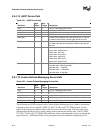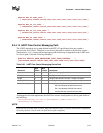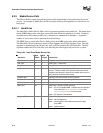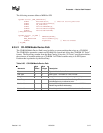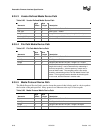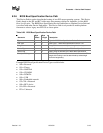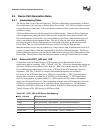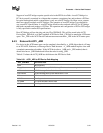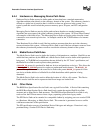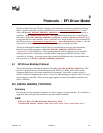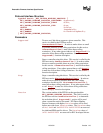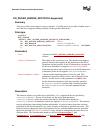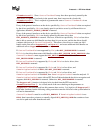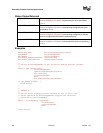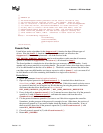
Extensible Firmware Interface Specification
8-22 12/01/02 Version 1.10
8.4.4 Hardware vs. Messaging Device Path Rules
Hardware Device Paths are used to define paths on buses that have a standard enumeration
algorithm and that relate directly to the coherency domain of the system. The coherency domain is
defined as a global set of resources that is visible to at least one processor in the system. In a
typical system this would include the processor memory space, IO space, and PCI configuration
space.
Messaging Device Paths are used to define paths on buses that have a standard enumeration
algorithm, but are not part of the global coherency domain of the system. SCSI and Fibre Channel
are examples of this kind of bus. The Messaging Device Path can also be used to describe virtual
connections over network-style devices. An example would be the TCPI/IP address of a internet
connection.
Thus Hardware Device Path is used if the bus produces resources that show up in the coherency
resource domain of the system. A Message Device Path is used if the bus consumes resources from
the coherency domain and produces resources out side the coherency domain of the system.
8.4.5 Media Device Path Rules
The Media Device Path is used to define the location of information on a medium. Hard Drives are
subdivided into partitions by the MBR and a Media Device Path is used to define which partition is
being used. A CD-ROM has boot partitions that are defined by the “El Torito” specification, and
the Media Device Path is used to point to these partitions.
A BLOCK_IO
protocol is produced for both raw devices and partitions on devices. This allows the
SIMPLE_FILE_SYSTEM
protocol to not have to understand media formats. The BLOCK_IO
protocol for a partition contains the same Device Path as the parent BLOCK_IO protocol for the
raw device with the addition of a Media Device Path that defines which partition is being
abstracted.
The Media Device Path is also used to define the location of a file in a file system. This Device
Path is used to load files and to represent what file an image was loaded from.
8.4.6 Other Rules
The BIOS Boot Specification Device Path is not a typical Device Path. A Device Path containing
the BIOS Boot Specification Device Path should only contain the required End Device Path
structure and no other Device Path structures. The BIOS Boot Specification Device Path is only
used to allow the EFI boot menus to boot a legacy operating system from legacy media.
The EFI Device Path can be extended in a compatible fashion by assigning your own vendor GUID
to a Hardware, Messaging, or Media Device Path. This extension is guaranteed to never conflict
with future extensions of this specification
The EFI specification reserves all undefined Device Path types and subtypes. Extension is only
permitted using a Vendor GUID Device Path entry.



